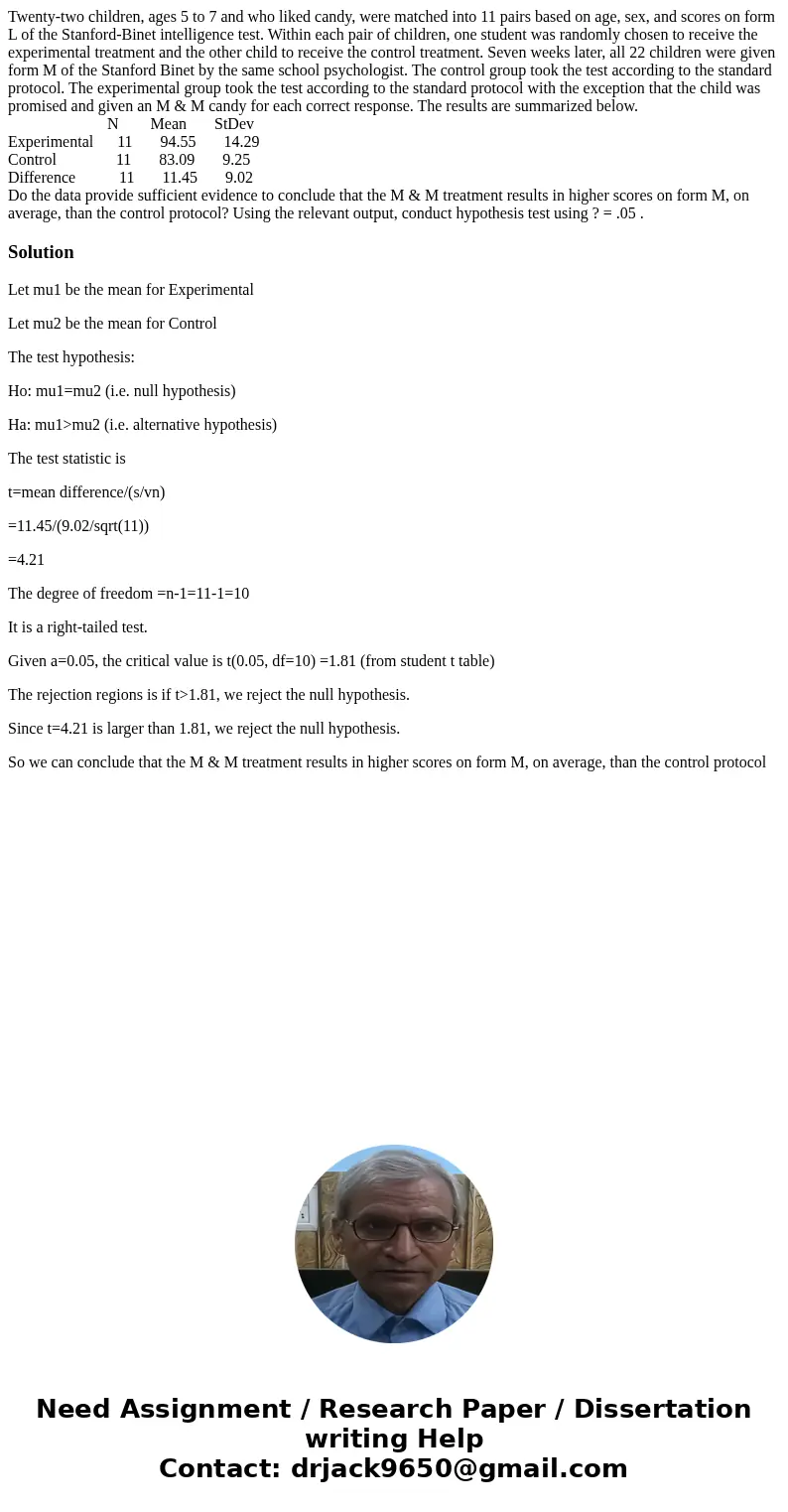Twentytwo children ages 5 to 7 and who liked candy were matc
Twenty-two children, ages 5 to 7 and who liked candy, were matched into 11 pairs based on age, sex, and scores on form L of the Stanford-Binet intelligence test. Within each pair of children, one student was randomly chosen to receive the experimental treatment and the other child to receive the control treatment. Seven weeks later, all 22 children were given form M of the Stanford Binet by the same school psychologist. The control group took the test according to the standard protocol. The experimental group took the test according to the standard protocol with the exception that the child was promised and given an M & M candy for each correct response. The results are summarized below.
N Mean StDev
Experimental 11 94.55 14.29
Control 11 83.09 9.25
Difference 11 11.45 9.02
Do the data provide sufficient evidence to conclude that the M & M treatment results in higher scores on form M, on average, than the control protocol? Using the relevant output, conduct hypothesis test using ? = .05 .
Solution
Let mu1 be the mean for Experimental
Let mu2 be the mean for Control
The test hypothesis:
Ho: mu1=mu2 (i.e. null hypothesis)
Ha: mu1>mu2 (i.e. alternative hypothesis)
The test statistic is
t=mean difference/(s/vn)
=11.45/(9.02/sqrt(11))
=4.21
The degree of freedom =n-1=11-1=10
It is a right-tailed test.
Given a=0.05, the critical value is t(0.05, df=10) =1.81 (from student t table)
The rejection regions is if t>1.81, we reject the null hypothesis.
Since t=4.21 is larger than 1.81, we reject the null hypothesis.
So we can conclude that the M & M treatment results in higher scores on form M, on average, than the control protocol

 Homework Sourse
Homework Sourse